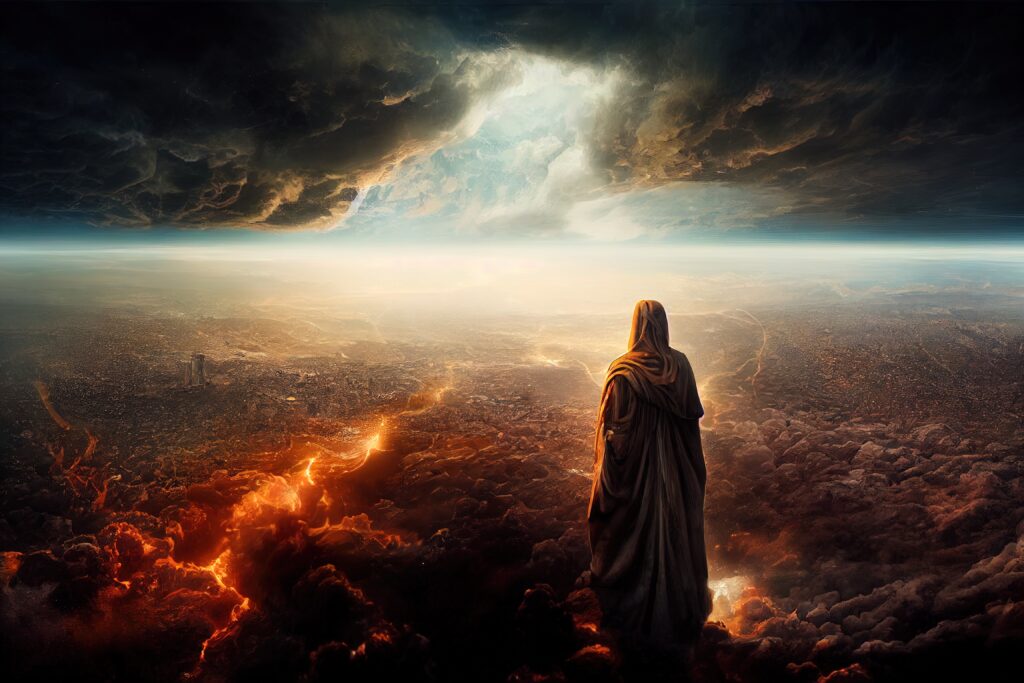
Finding our way through the maze of life.
I am the living one. I died, but look—I am alive forever and ever! And I hold the keys of death and the grave. (Hades NASB) “Write down what you have seen—both the things that are now happening and the things that will happen.” Revelation 1:18-19 NLT
Scholars have noticed a surprising similarity between the description of Jesus here and the greatest, most popular goddess of Asia Minor, Hekate. Hekate was renowned as the one who possessed the keys to Hades, the mythological realm of the dead. She was called “trimorphous,” having three different forms or shapes related to the three great parts of the universe: heaven, earth, and the underworld (Hades). In her heavenly form, she was called Selene or Luna (the moon), on earth, she was called Artemis or Diana (see Acts 19). She was also known as “the beginning and the end” (Rev 22:13).
As the one who freely moves between heaven, earth, and the underworld, Hekate would be the goddess of revelation. She would be able to reveal on earth the things that went on in heaven and in Hades. As the holder of the keys, she would also be the one who could provide salvation.
Why would Jesus refer to Himself in ways that so strikingly resemble a pagan goddess? Because God always meets people where they are (see 1 Cor 9:19-23). Every conversion story is unique because God is creative in His approach.
I remember a friend who was (in the early 70’s) high on drugs lying on the floor listening to some rock music when God spoke to him. Responding to God’s call, he quit the drugs and the wild life and ended up sitting next to me doing theology in 1974. A few years later he finished college and entered the ministry! It’s an incredible testimony to Jesus’ ability to reach anyone, even in a drug and rock music infested room. This is the infinite grace of Jesus Christ, who pulls branches out of the fire and puts them to good use! That means there’s hope for you and me too!
In verse 11 John was told to “Write what you see in a book and send it to the seven churches.” The word for “see” in that verse is a present tense, indicating that John was already in vision and that the vision would continue for a time. In verse 19, on the other hand, John is told to “Write what you have seen.” The word for seeing is no longer in the present tense; it is now in the past tense. This suggests that John received the whole vision between verse 10, when he went into the spirit “on the day of the Lord,” and verse 18 when he finished the narrative of his encounter with Jesus. By verse 19 the vision was over, it was time for the writing to begin.
According to verse 19, the content of Revelation fits into two categories; the things which are and the things which must happen after these things. In Rev 4:1 the language of 1:19 is repeated. “Come up here and I will show you the things which must happen after these things.” Verse 19, then, seems to be a structuring device for the rest of the book. The first part of the vision involves the “things which are,” the messages to the seven churches (Revelation 2 and 3). The rest of the vision focuses primarily on events that are future from John’s perspective. But what good is it to the churches to learn about events beyond their day?
God tells us about the future so that we can get where we are going today. Each day is a piece of our itinerary toward God’s purpose. With an eye on His Word, we can find our way through the maze of life.

Thank you Ross for sharing Revelation with me God bless you and your family 🙏